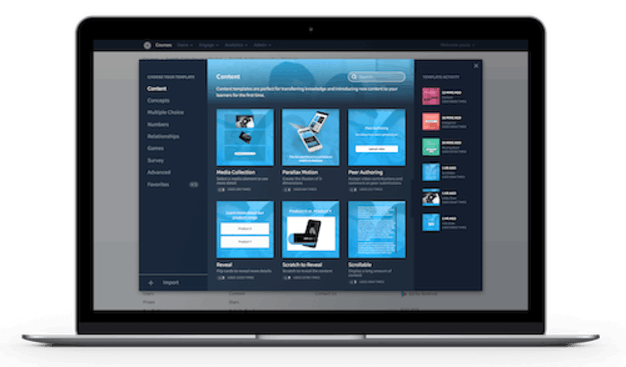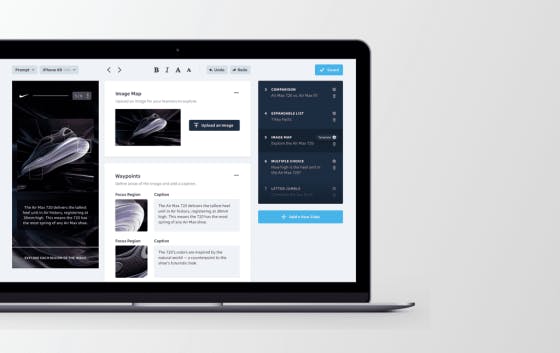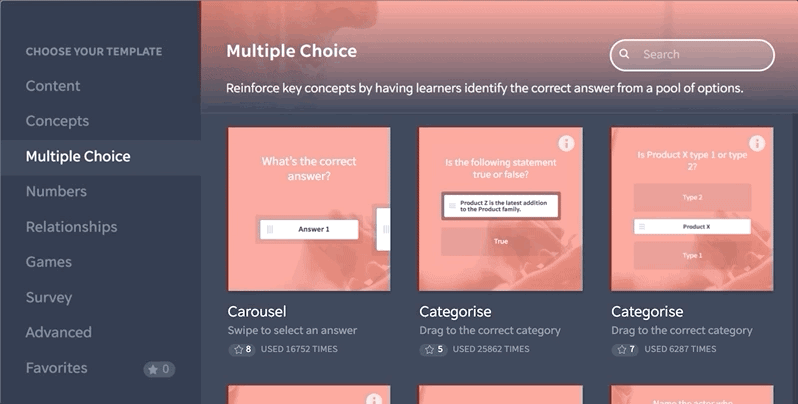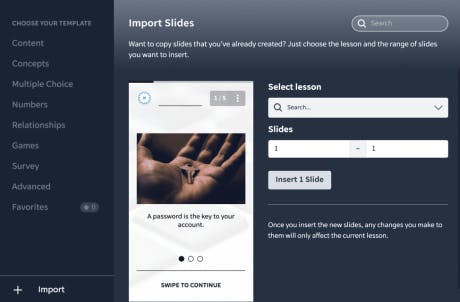Instructional Designer

Some people may think that there’s no difference between a teacher and an Instructional Designer. Certainly there are many similarities but the disciplines/professions/careers/practices are significantly different. So what actually is an Instructional Designer (ID) and what are their origins?
What is an Instructional Designer?
Instructional designers are teachers who help other teachers. However, while regular teachers have direct contact with students, trainees and learners, IDs will often be one step removed from this interface. IDs will be designing and providing the courses, courseware, learning tools which the teachers use to do their job. An ID will often configure a learning management system (LMS) so that a teacher can use it to teach with. They make knowledge transfer as effective, efficient and engaging as possible.
What does he do?
Depending on the production team (i.e., whether that includes multimedia specialists, graphic designers and LMS programmers), and whether the instructional design subfield is within the corporate training or academic sector, the day-to-day responsibilities of an instructional designer can be extremely varied. However, it is likely that an instructional designer will be juggling multiple projects on any given day, all at different stages in the production timeline. At the outset, the instructional designer will play a leading role in providing a needs-analysis, and subsequently defining the learning objectives, messages and technical requirements that stem from this assessment.
Ultimately, the instructional designer is responsible for translating a central learning objective and connected messages into chunked down content and assessment, arranging segments into a learning sequence that will form a course outline. Amidst storyboarding and prototyping, the instructional designer acts as a central interlocutor when it comes to communicating between different stakeholders such as subject matter experts, project managers, clients, and other members of the production team.
How to become an instructional designer?
Specialized instructional design courses are increasingly being offered by traditional academic institutions, reflecting the rapidly growing field. Alongside the ever-increasing vocational diplomas on offer, longer instructional design courses are predominantly offered as postgraduate specializations, such as Georgetown University’s Master of Learning, Design and Technology, and Harvard’s Learning Design and Technology Graduate Certificate, providing excellent options for generalists or career-changers wanting to up-skill. With more and more educators making the leap from the classroom to instructional design, Master of Education degrees are increasingly incorporating elective units on instructional design.
More often than not, an instructional designer’s career path will be more indirect and will involve transferring skills from previous careers, alongside self-directed learning. One of the easiest places to start your journey into the world of instructional design is to sign up to one of the multitudes of MOOCs available, join an instructional design boot camp, read blogs like this one, and read/listen/watch content on microlearning, eLearning, and instructional design.

How much does he make?
annual salary is A6,857 (according to Glassdoor). As an entry-level instructional designer, you can expect to earn an average annual salary in the mid-70k range. Freelancing might also be an option for entry-level and experienced instructional designers alike, with average 5/hour rates roughly equaling out to similar annual figures in more permanent roles.
If we look at US salaries, according to the Bureau of Labor Statistics, those instructional designers working in government sectors receive higher average earnings of US7,790 per year.3 It’s also important to consider the entrepreneurial, and highly profitable, opportunities available for instructional designers to branch off in the private sector and sell their courses.
What skills do you need?
At first glance, an instructional designer might appear to be a jack-of-all-trades, with skills ranging from developing needs assessments, stakeholder management and storyboarding to programming. Being an instructional designer is very much a hybrid role that requires skills across educational psychology, communications, tech, and design. By their very nature, instructional designers are big picture creative thinkers; they play pivotal roles in chunking down content, connecting learning messages, and ensuring that content links back to an overarching learning objective in the most effective and relevant manner.
Many aspiring instructional designers will be comforted by the fact that with rapid authoring tools and templates, coding wizardry is not necessarily required; however, basic technological competency would be expected when working with authoring and SCORM production tools. Similarly, basic visual design skills would be an advantage. A broad understanding of pedagogical theory, in addition to ID methodologies, is tremendously beneficial when creating authentic and engaging learning experiences.
Career Path
The career path of an instructional designer is not a “one size fits all” deal. However, it usually begins with some type of formal, academic education. The next step is often a low level, team position as a content writer. Once you’ve gotten some experience, you will move on to leading a team—perhaps starting as junior lead and moving up to senior lead. If you decide to stay with the same organization, you will be able advance through the levels of management. Yet, you may decide to take your know-how and open up a company of your own. Check out this personal story on Quora for more information.
Tools
As such the better an Instructional Designer is, the better ALL of the associated teachers will be and the better the learning outcomes will be.
There are other differences too. The majority of teachers will be part of the education vertical. Instructional Designers often consider themselves to be part of the learning industry – a complimentary industry that simultaneously enhances education as well as other industries.
An instructional designer uses various tools and software in their work in order to produce the best outcome. Great content authoring tools are needed by instructional designers as they determine the effectiveness and extent of success of the LMS. Also, video creation tools are needed to implement an element of multi-modal functioning for ultimate learner engagement. You can use EdApp’s Instructional Design Software for free!

What is instructional design?
Instructional Design is a relatively recent development compared to teaching which is one of the oldest professions/practices in human history. It has roots in both systems engineering and the behaviourism elements of psychology, but by far the most intriguing origin story comes from World War 2. As Wikipedia puts it, “The role of systems engineering in the early development of instructional design was demonstrated during World War II when a considerable amount of training materials for the military were developed based on the principles of instruction, learning, and human behaviour.” It continues, “In 1946, Edgar Dale outlined a hierarchy of instructional methods, organized intuitively by their concreteness. The framework first migrated to the industrial sector to train workers before it finally found its way to the education field.”

Perhaps not surprisingly, in recent decades, teachers have learned teaching at teaching school from teachers while Instructional Designers have come from an HR background and either taught themselves ID or sought official training and qualifications in the subject. In more recent years, the fields have started converging as practitioners realised that the best learning, teaching and instructional benefits come from a multi-faceted instructional approach that uses elements from all disciplines.
As such, teachers have started to use ID techniques and technologies to train young pupils while Instructional Designers are getting closer to teachers and even teaching themselves. The latter is especially true in company training scenarios where eLearning practices using learning management systems are becoming more and more optimised to ensure that unwilling company workers who traditionally loathe company training days, are more-actively engaged with a view to them retaining the knowledge they are given to the highest degree possible. This makes sense as workers who both enjoy training and take new skills away from it are happier, more productive, more loyal and generally feel more valued.
Examples in education
1) Using the microlearning methodology, we can avoid cognitive overload and boost engagement and retention levels by keeping videos or interactive content short. In fact, research shows that students start to drop out after six minutes of viewing videos (Kim, 2014). Add a spaced-repetition algorithm to deliver short recurring bursts of content, and you further boost the long-term retention of knowledge.
2) Embedding of quizzes or learning activities inside video lessons can greatly improve learning outcomes. A recent study found that an over-reliance on video lectures can actually result in decreased performance and provide students with a false sense of security. However, when students expect to be tested ‘in the moment of learning,’ test performance results increase by 27 percent (Szpunar, 2014). Furthermore, engagement levels are boosted when interactivity is embedded within the core content, increasing students’ watch-time by a quarter (Geri, 2017) .
3) Learning activities and tests need to be relevant, authentic, and purposeful. It is imperative that all activities are directly aligned to overarching learning objectives and more specific learning messages. This is where instructional design models, or the use of backward design come into play.
4) Aim to emulate the type of feedback a student would receive in a physical classroom. If a student receives feedback on an incorrectly answered question, they need to understand where they went wrong, and visualize this process through modelling and detailed instructional feedback. Feedback also serves an important role in maintaining student engagement. Going beyond knowledge-specific feedback might seem more challenging from an instructional design point of view, but it can be done by humanizing the language of feedback, or using gamified features and rewards as feedback.
5) Provide learning analytics, not only to provide insights into the effectiveness of learning programs retrospectively, and to inform subsequent instructional design, but also to enable learning facilitators to pivot mid-course and adapt the learning direction and target hotspots as needed.
Design Models
There is a range of instructional design methodologies touching on various principles and methodology. An example of this is the ADDIE model, which exemplifies a five-phase flexible guideline for creating effective training and support tools; Analyze, Design, Develop, Implement, Evaluate. One reason why instructional designers are drawn to this model, other than it being cyclical, is that ADDIE enables lessons to evolve with the needs, culture and attitudes of learners.
If you would like to read more about instructional design models and strategies, take a look at these:
TPACK Framework for Instructional Designers
Instructional Strategies: 10 best for corporate training

Teacher to instructional designer
There are more and more online learning contents that present the material in different ways, and it is noticeable that one part of them stands out in terms of quality and interestingness, but also that a large number of these contents are of poor quality, tedious, inappropriate or ineffective.
It is poor quality and unmotivating content that has influenced the widespread opinion that e-learning is of lower quality, that it is partially applicable, applicable only to certain topics, or only in situations where it cannot be avoided.
But, is that so? Numerous examples and the fact that eLearning is increasingly used in the world and has become a virtually unavoidable way of learning, both in large companies and in schools and colleges, show that it is still possible to prepare a quality and effective e-learning course.
The question is what distinguishes a good e-course from a bad one and how to make it high-quality, interesting, and efficient. To answer this question, we should consider how people learn and what are the basic differences between classical teaching in which one person transfers knowledge to another and learning through which we are “guided” by educational material.
For learning to be complete and effective, we need guidance. And the one who leads us needs to know how to lead us, that is, how to organize learning. And that’s where instructional design comes into play.
An instructional designer is a person whose task is to translate pedagogical principles and practice into an instructional curriculum while paying attention to the desired learning outcomes. To put it shortly, the instructional designer deals with the analysis, design, development, implementation, and evaluation of learning processes and materials.
The credentials you need to work as an instructional designer vary greatly across companies. Some of them look for a qualification or certificate of instructional design, while others only look for experience and judge candidates based on their job portfolios.
If you are a teacher and want to become an instructional designer, you already have a solid base to work on.

Some of the prerequisites for professional experience/knowledge you should gain for the position of instructional designer are:
- curriculum development, training, teaching, and assistance
- expertise in establishing and maintaining learning management and management systems and in the advanced use of LMS tools
- good knowledge of learning theory and cognitive science, including the ability to develop an appropriate teaching strategy and structure, to create effective and equitable assessment methods, as well as content with information that can be used and applied in the real world
- thorough multimedia knowledge to select appropriate multimedia content for teaching and creating effective documents, texts, audio, and video materials
- experience in managing e-learning projects
A new instructional design methodology: Microlearning
One eLearning area that is experiencing a high degree of convergence from teaching skills and ID skills, is microlearning. This is the practice of splitting lessons up into small, easily-digestible, bite-sized microlessons which only take a short time to complete. They work best when only a few topics are covered and questions are interactive – even gamified. With increasingly small time spans to operate within, learning has to be highly optimised and so teachers are making the most of instructional design techniques – especially when adults, who may no longer be susceptible to learning, are involved. You can read more about microlearning here and see what our Instructional Designers recommend for creating the best micro lesson plan. You can read more about how your business can be boosted with eTraining here.

EdApp makes it easier than ever to create your very own online course. Check it out here, https://www.edapp.com/blog/how-to-create-an-online-course/
If you’d like to try a mobile-focused learning management system which helps teachers and Instructional Designers transfer knowledge in the most effective way possible (and offers more-than 50 ready-made microlesson templates) get in touch at enquiries@edapp.com. You can also use EdApp’s Free LMS Platform and authoring tool to train your teams of all sizes.
You might also be interested in these articles:
www.edapp.com/blog/what-is-a-complex-concept-and-how-do-you-teach-it/
www.edapp.com/blog/tpack-framework-for-instructional-designers/
https://www.edapp.com/blog/learning-design-approach/
https://www.edapp.com/blog/instructional-design-tips/
https://www.edapp.com/blog/20-free-teacher-tools/
https://www.edapp.com/blog/online-test-maker/
References
Geri, N., Winer, A. & Zaks, B., (2017) ‘Challenging the six-minute myth of online video lectures: can interactivity expand the attention span of learners’, Online Journal of Applied Knowledge Management, vol. 5, no. 1, pp. 101–111.
Kim, J., Guo, P. J., Seaton, D. T., Mitros, P., Gajos, K. Z. & Miller, R. C. (2014). Understanding in-video dropouts and interaction peaks in online lecture videos. Conference proceedings of the first ACM conference on Learning.
Szpunar, K. K., Jing, H. G., & Schacter, D. L. (2014). Overcoming overconfidence in learning from video-recorded lectures: Implications of interpolated testing for online education. Journal of Applied Research in Memory and Cognition, 3(3), 161-164.
Click here to try our Giving and Receiving Feedback course from our free editable content library!
Curated course examples
Author
Guest Author Daniel Brown
Daniel Brown is a senior technical editor and writer that has worked in the education and technology sectors for two decades. Their background experience includes curriculum development and course book creation.
